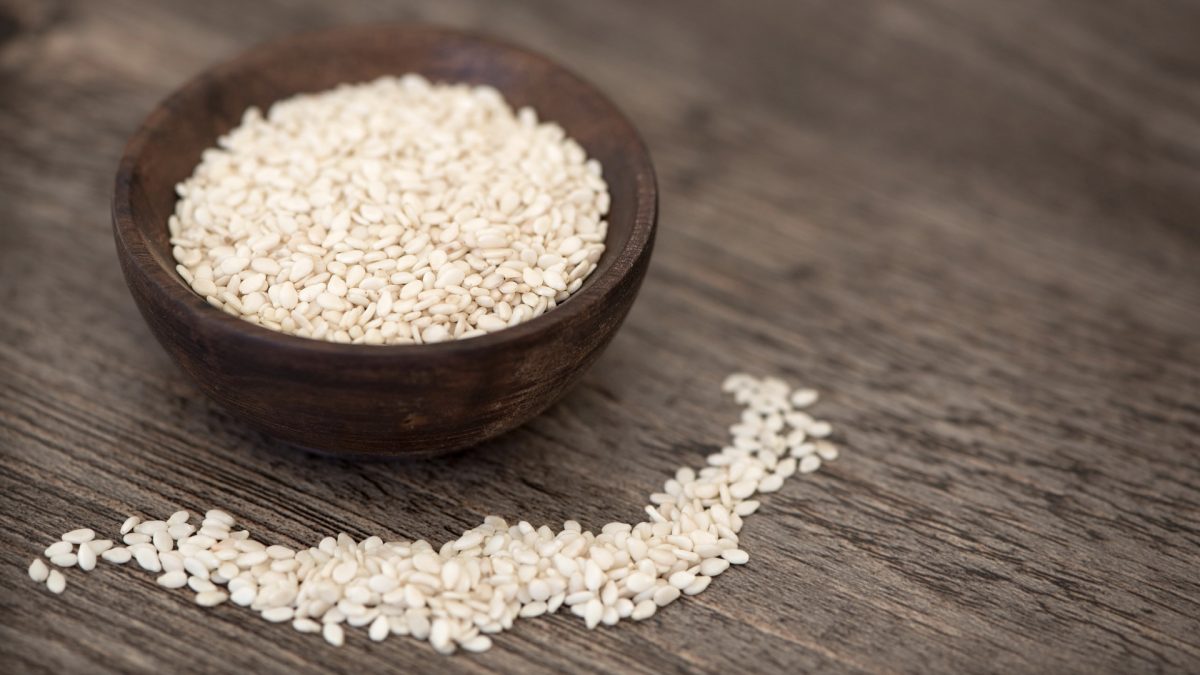Doctors have been injecting arthritis patients with gold since the 1920s. In fact, “[g]old-based medicines have been in use for thousands of years…and remarkably…are still in clinical use as DMARDs,” or disease-modifying anti-rheumatic drugs, meaning they can slow the progression of rheumatoid arthritis. Unfortunately, such drugs can be toxic and even fatal, causing conditions such as gold lung, a gold-induced lung disease. “Although its use can be limited by the incidence of serious toxicity,” injectable gold has been shown to be beneficial to patients with rheumatoid arthritis. But maybe, as some researchers have suspected, some of that benefit comes from the sesame oil that’s injected, which is used as the liquid carrier for the gold.
As I discuss in my video Sesame Seeds for Knee Osteoarthritis, sesame seeds contain anti-inflammatory compounds with names such as sesamin and sesamol, which researchers suggest “may serve as a potential treatment for various inflammatory diseases.” Those observations, however, came from in vitro (test tube) studies. First, we have to see if sesame seeds have an anti-inflammatory effect in people, not just in cells in a petri dish, but there haven’t been any studies on the effects of sesame seeds on inflammatory markers in people with arthritis, for example…until now.
The abstract states: “Considering the high prevalence of osteoarthritis (OA) and since until now there had not been any human studies to evaluate the effect of sesame in OA patients, this study was designed to assess the effect of administration of sesame on inflammation…” Indeed, researchers found a significant drop in inflammatory markers, but what effect did sesame seeds have on the patients’ actual disease?
Fifty patients with osteoarthritis of the knee were split into two groups. Both received standard treatment, but the sesame group also received about a quarter cup of sesame seeds a day for two months. Before they started, the patients described their pain as about nine out of ten, where zero is no pain and ten is the maximum tolerable pain. After two months, the control group felt a little better and reported their pain was down to seven, but the sesame group dropped down to three and a half, significantly lower than the control group. The researchers concluded that sesame appeared to have a “positive effect…improving clinical signs and symptoms in patients with knee OA…”
The main problem with the study, though, is that the control group hadn’t been given a placebo. It’s hard to come up with a fake sesame seed, but without a placebo, researchers basically compared doing nothing to doing something, and any time you have patients do something, you can’t discount the placebo effect. That said, what are the downsides? That’s the nice thing about using food as medicine—only good side effects. Though the results are mixed, there have been studies using placebo controls that found that adding sesame seeds to our diet may improve our cholesterol and antioxidant status, and the amount of sesamin found in as little as about one tablespoon of sesame seeds can modestly lower blood pressure a few points within a month, enough, perhaps, to lower fatal stroke and heart attack risk by about 5 percent, potentially saving thousands of lives.
What other dietary interventions can help with arthritis? Check out:
- Why Do Plant-Based Diets Help Rheumatoid Arthritis?
- Gout Treatment with a Cherry on Top
- Turmeric Curcumin and Osteoarthritis
- Turmeric Curcumin and Rheumatoid Arthritis
- The Inflammatory Meat Molecule Neu5Gc
- Which Spices Fight Inflammation?
- Ginger for Osteoarthritis
- Sodium and Autoimmune Disease: Rubbing Salt in the Wound?
If the placebo effect is really that powerful, should doctors prescribe them? They already do! Check out The Lie That Heals: Should Doctors Give Placebos? for more on this.
In health,
Michael Greger, M.D.
PS: If you haven’t yet, you can subscribe to my free videos here and watch my live, year-in-review presentations:
- 2012: Uprooting the Leading Causes of Death
- 2013: More Than an Apple a Day
- 2014: From Table to Able: Combating Disabling Diseases with Food
- 2015: Food as Medicine: Preventing and Treating the Most Dreaded Diseases with Diet
- 2016: How Not To Die: The Role of Diet in Preventing, Arresting, and Reversing Our Top 15 Killers
